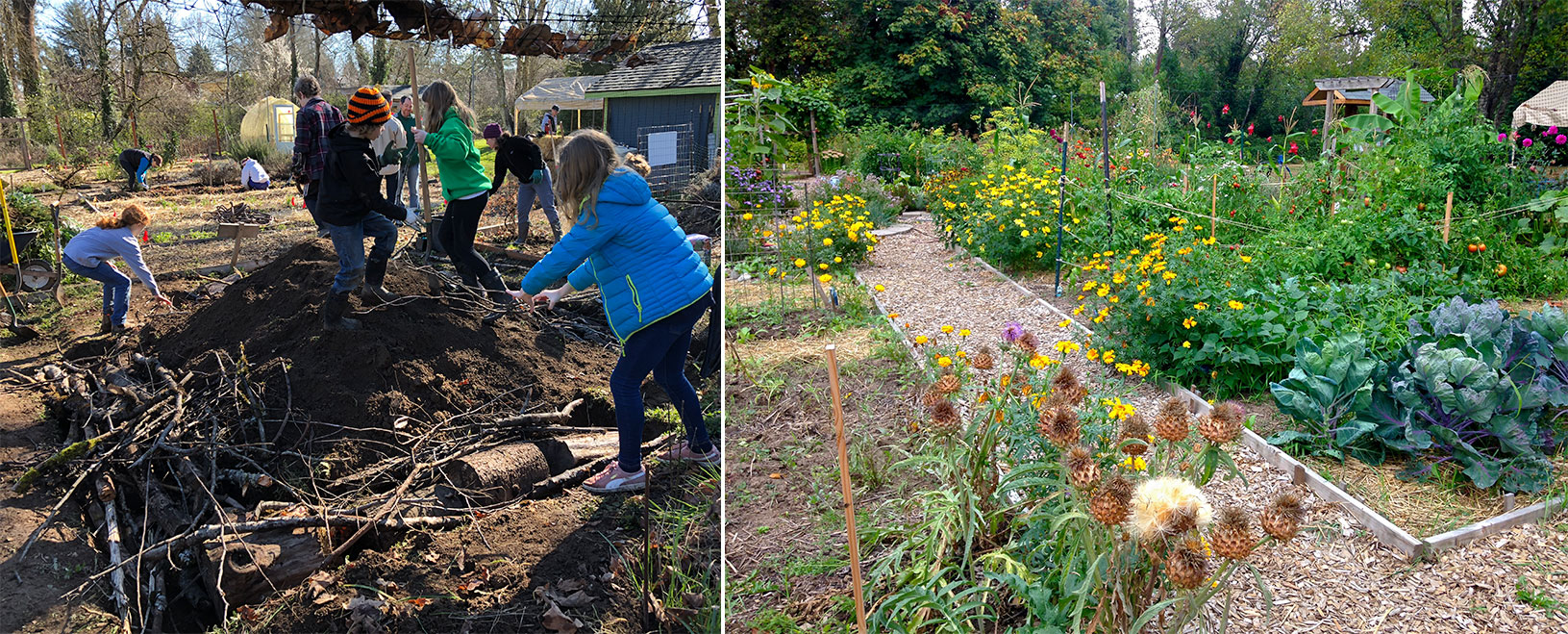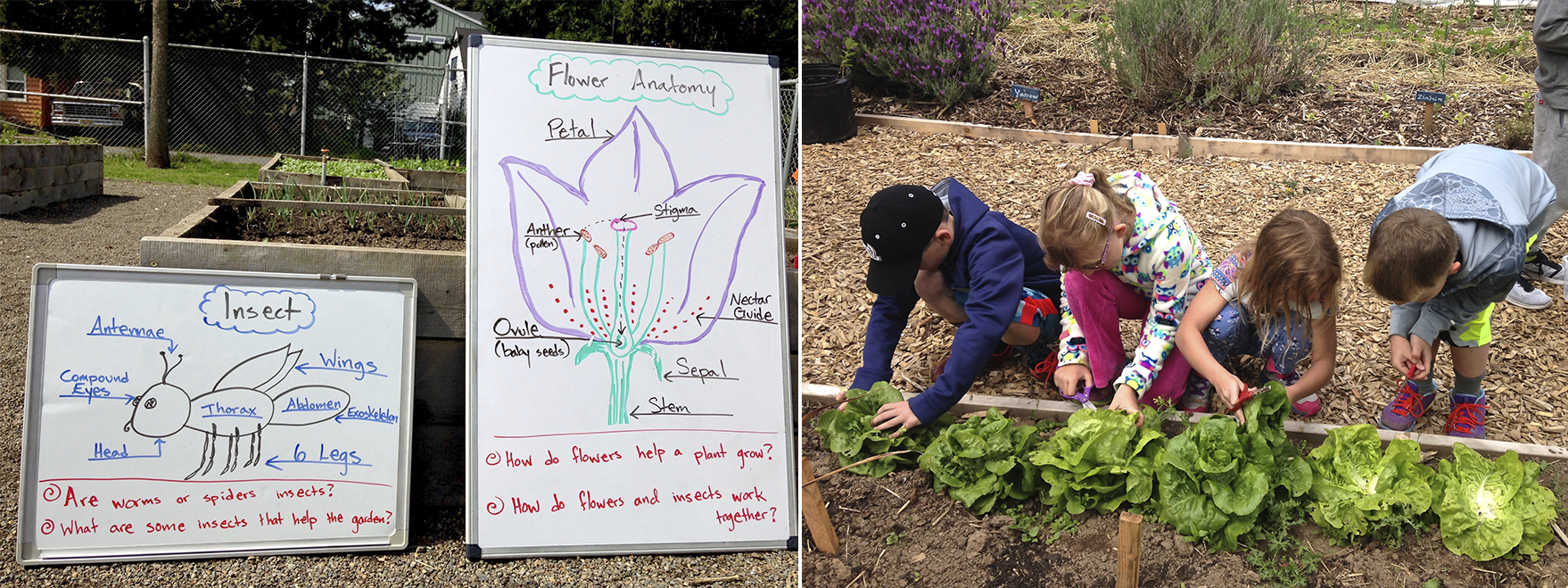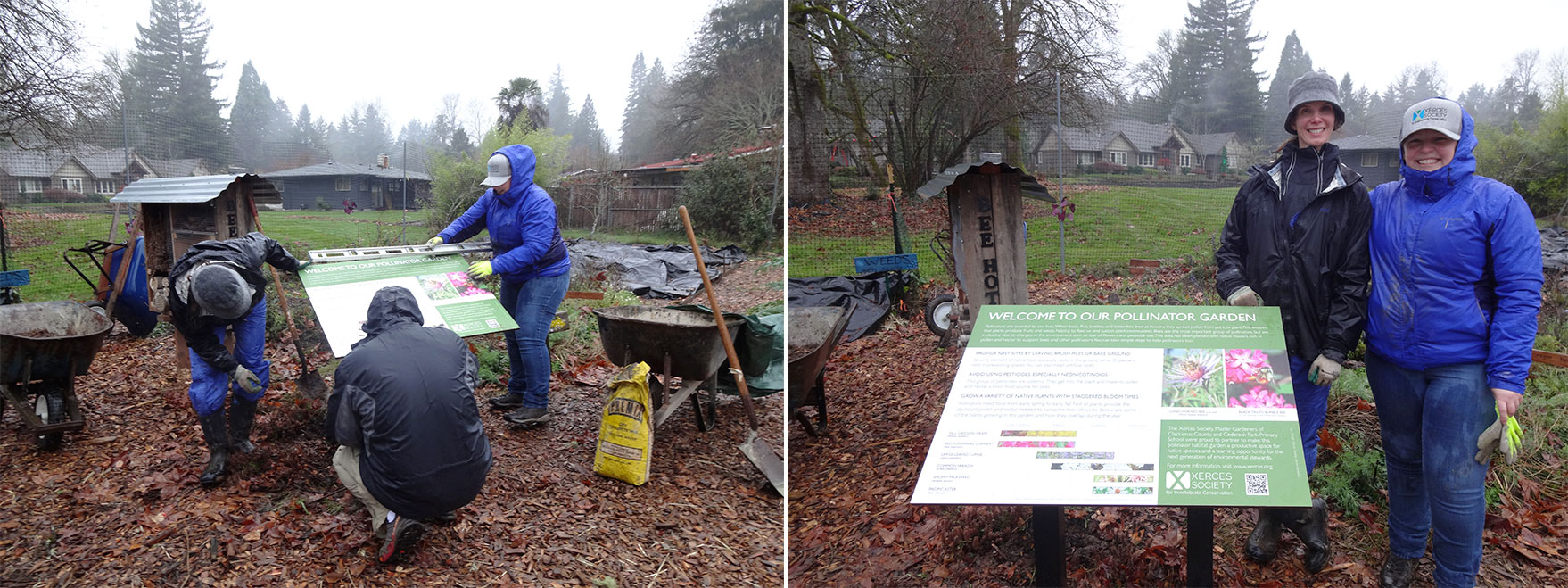Being assigned to create an interpretive panel for Cedaroak Park Primary School, where I attended grade school, was a special experience.
Soon after I started at the Xerces Society, in fall 2018, I was tasked with designing, ordering, and installing an interpretive sign for a local school’s pollinator garden. I was already excited for this project, and then I learned it was for Cedaroak Park Primary School in West Linn, Oregon—where I went to grade school! Creating a sign for Cedaroak that highlights pollinator-friendly gardening techniques felt particularly fitting because, throughout my grade school years, I drew countless posters about sustainability and saving endangered species. In some respects, I haven’t changed much!

I was also thrilled to learn how my new employer has supported the development of Cedaroak’s Trillium Garden. Scott Black, the Xerces Society’s executive director, and Matthew Shepherd, Xerces' communications director, both consulted with Carolyn Garnett, the parent volunteer who initiated the revival of Cedaroak’s gardens. Based on site visits and conversations, the Xerces Society advised Carolyn on plant selection, layout, alignment for optimum lighting, and creating an inviting space. The Xerces Society also donated pollinator gardening books to support Carolyn’s efforts.
With this information, and the blessing of Steve Jones, the teacher who originally built the Trillium Garden, Carolyn pursued her goal of “making the garden program more entrenched in the school, and making (the garden) more inspirational for the students.”
Carolyn started by implementing better “plant infrastructure.” In addition to the annual flowers and vegetables that the Trillium Garden already supported, she added perennial flowers along the perimeter and in the center of the space, and developed a dedicated pollinator garden in one section of the Trillium Garden. Carolyn selected species from a customized list from the Xerces Society that detailed pollinator-friendly flowers with staggered bloom times, to provide nectar resources throughout the year.
To house these pollinator plants, student volunteers built hügelkultur beds, mounds filled with woody debris that promote drainage and carbon sequestration. The raised beds also provided height to the garden—a characteristic the Xerces Society recommended incorporating to make the space more engaging. Carolyn also added a bee hotel, which provides nesting opportunities for a wide array of native, cavity-nesting bees. All of these measures support pollinators year-round, and provide year-round interest for students and community members.

Carolyn has added “human infrastructure” to the Trillium Garden too, including a shed, greenhouse, water system, compost bin, and paths—efforts that were supported by parent and student volunteers, Eagle Scout Projects, and donations from parents, community members, and businesses. The garden is also peppered with whimsical signs created by students. There is now an outdoor classroom next to the Trillium Garden, as well, thanks both to Carolyn’s efforts and community support. The space features rows of wooden benches under a sturdy awning, allowing courses to be taught rain or shine.
Yes, I said “classroom” and “courses”!
With Carolyn’s encouragement, Cedaroak’s parent–teacher association funded a three-month pilot program for a school-wide garden course. It was so well-received that it became a full-year class integrated into the school day. Now in its third year, Cedaroak’s school garden class is hailed as a model for the rest of the West Linn–Wilsonville School District. This successful course is taught by Djamila Moore, Education Director at Grow Portland.
Grow Portland is a nonprofit that “uses garden programming to improve people’s physical and mental health.” The organization is “dedicated to the expansion of urban gardening with a special focus on improving the lives of refugees, immigrants, and people of color,” according to their website. Grow Portland provides classes and resources to low-income schools thanks to the support of funders. For more affluent schools, the PTA covers costs (as is the case at Cedaroak).
Djamila designs her curriculum to convey key science concepts, reinforce other teachers’ lessons, and provide an engaging way to work on district- and state-mandated learning objectives. Subjects like botany, pollination, soil and decomposition, and the water cycle are conveyed with experiential learning that is seasonally relevant.

Because it’s planting season for many crops, February’s curriculum centers on seeds—including seed anatomy and germination. Much of the rest of the year involves developing hands-on gardening skills—lessons imbued with collaborative learning, teamwork, and science education. Djamila’s work has been paying dividends, helping students to achieve academically, as well as fundamentally changing the ways they interact with each other and the natural world.
“(Djamila’s teaching) has a big emphasis on doing no harm to other creatures, and I am seeing the students’ attitudes change,” Carolyn said. “They are gentler with all of the invertebrates, like earthworms, and less afraid of the various creatures, like bees.”
Djamila has also observed increased confidence and enthusiasm.
“I’ve seen an evolving openness from the kids, who used to be less sure about touching insects or eating vegetables they’re not familiar with,” Djamila said. “Now I have to tell them not to eat all the vegetables, or there won’t be any left for other students!”

I am proud to be part of the Xerces Society, the organization that has supported these positive outcomes for Cedaroak. It was a pleasure to get to know Djamila and Carolyn, and to collaborate with Carolyn on the interpretive sign for Cedaroak’s pollinator garden. On a recent, rainy, wintry day, Carolyn, my parents (who still live near Cedaroak), and I convened at the Trillium Garden to install the sign, tying together my personal and professional life, and past and present, in a beautifully serendipitous way.
The most beautiful part of this story, however, is the transformation of Cedaroak.
“We have worked hard to change the identity and culture of the school—a school that prioritizes gardening and the environment,” Carolyn said. “The more our young people are motivated to take care of our earth and nature, the better off our world will be. Our kids are our future.”
Further Reading
Learn how to support pollinators in your own garden.
Learn more about the Xerces Society's Pollinator Conservation Program.



